Last updated: March 29, 2024
Article
Modern Women in Science at Grand Canyon
From the Colorado River to the rim of the canyon, women in science have had a major impact on how we understand Grand Canyon National Park. Standing on the shoulders of these giants, modern female scientists in the park continue to move the needle of science.
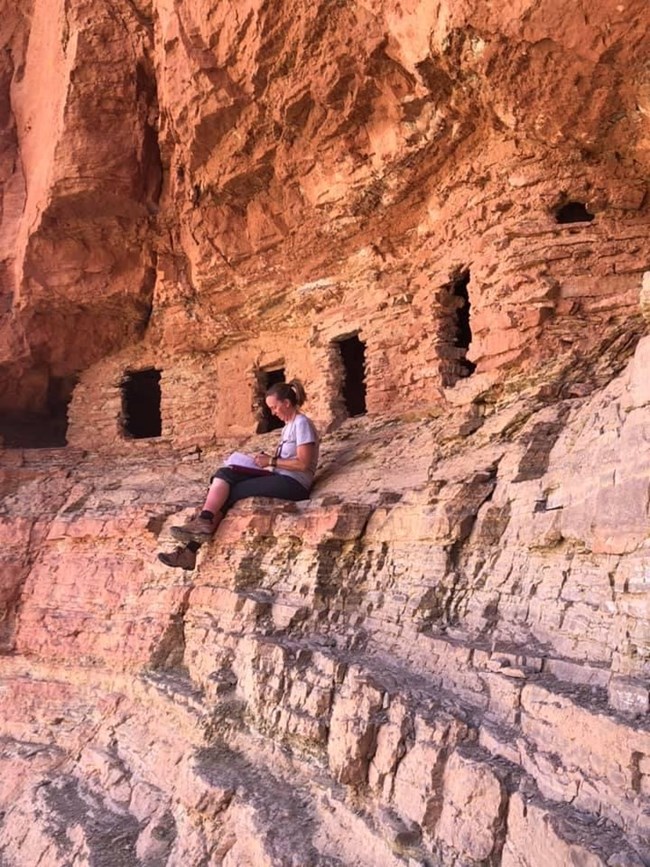
Donelle Huffer, Archaelogist
What inspired you to study/pursue a career in science?
As a child and teenager, I loved science and nature shows on PBS. I grew up in a remote area of the Mohave Desert and enjoyed exploring and looking for wildlife, interesting rocks, and archaeological artifacts and sites. I imagined I was a great explorer like Jacques Cousteau or Wild Kingdom’s Marlin Perkins while I chased lizards, watched great horned owls dozing in rocky alcoves, and carried home pockets full of interesting rocks to add to my windowsill. I didn’t know anything about these scientists except what I saw on TV, but I knew I wanted to do what they did.
I originally went to college to study wildlife biology because I was inspired by this early educational programming. My attention began to shift to archaeology, however, as I took more and more anthropology courses and realized my interest in history and material culture. I earned my bachelor’s degree in anthropology, and I later merged my interests in zoology and archaeology by studying zooarchaeology (the study of animal remains from archaeological sites) in graduate school.
I am an archaeologist at the Grand Canyon. The primary focus of my position is the preservation of traditionally built architecture at archaeological sites such as Tusayan Pueblo. This involves completing stabilization (for example, re-applying mud mortar in deteriorated stone masonry walls) and documenting and recording the condition of standing architecture. I am also involved with all other aspects of archaeological fieldwork and research including locating and recording archaeological sites, monitoring their condition, and ensuring cultural resources are not harmed by park operations.
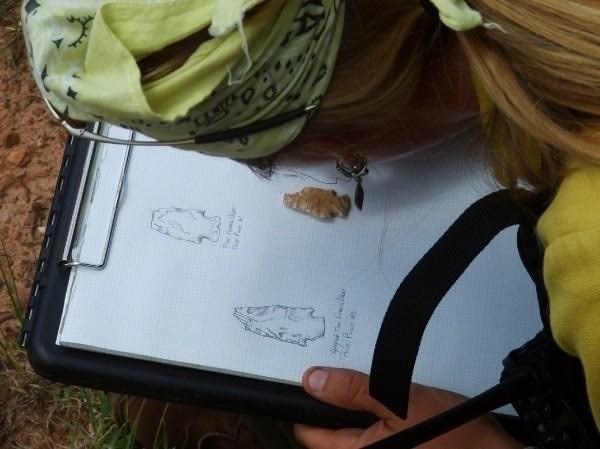
What do you enjoy most about your job?
I have always loved exploring and getting to visit remote places most people don’t get to see, which is easy to do in a place like the Grand Canyon. I also enjoy the subtle discoveries in archaeology: the petroglyph you can only see for 30 minutes of the day when the sun is just right, the arrowhead hiding in plain sight, or the 1,000-year-old plaster floor that delicately emerges as you brush away the soil. I also love research and focusing on tiny details: diving into books and papers, analyzing and illustrating artifacts, and piecing together bits of information to illuminate the bigger picture of the past.
What advice would you give young women who are interested in a science related career?
Step outside of your comfort zone. Early in your career, challenge yourself to explore the various sub-disciplines in your chosen field and work for different organizations, in a variety of locations, and for a diversity of people. You never know what or who will inspire you or how the experience will serve you in the future. Every experience you have, good and bad, will teach you who you are, what you like to do, what you don’t like to do, what you’re made of, and how you can use your unique collection of experiences to make insightful contributions to your profession. And it’s OK to not like doing something; own it, learn from it, and move on.
Science disciplines can be male dominated, and your male colleagues may try to impose “traditional” female roles onto you in the workplace or hold you to different standards. But don’t let people pigeonhole you into something because of your gender or what kind of person they think you are. Be yourself, follow your instincts, take risks, and find colleagues who are supportive and intellectually challenging mentors.
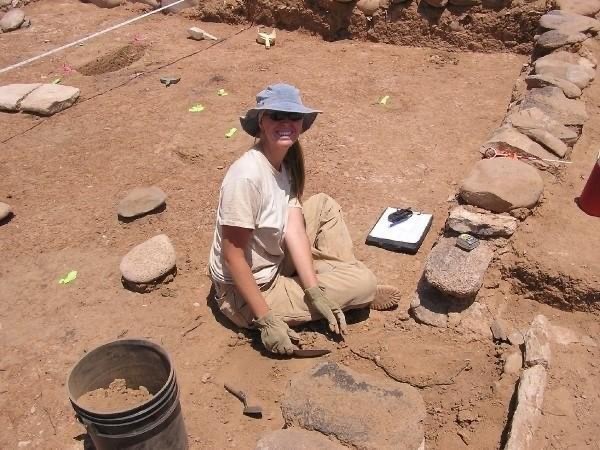
Get to know your colleagues. Never underestimate the importance of meeting and working with new people; it will be the single most important thing you can do for the advancement of your career. Go to conferences, social gatherings, lectures, workshops, volunteer events, etc. Science-related careers are often small groups of tight-knit professionals. Meeting new people and building strong professional relationships and friendships will provide you with a cadre of colleagues who will be your support system throughout your career.
Work smarter not harder. It’s important to work hard and demonstrate perseverance, but you won’t get the recognition you know you deserve by keeping your head down and over-working yourself to burnout while trying to prove that you are good enough. (Trust me on this one!) As you gain more experience and knowledge about what really inspires you and makes you excited about your job, concentrate your efforts on projects and research that you find truly stimulating and fulfilling. Then, own your accomplishments and build your personal brand by finding creative and meaningful ways to share your work and experiences with others.
Make time for yourself. Your life outside of your professional pursuits is just as important to building skills and experiences (and keeping you sane) as your professional accomplishments.
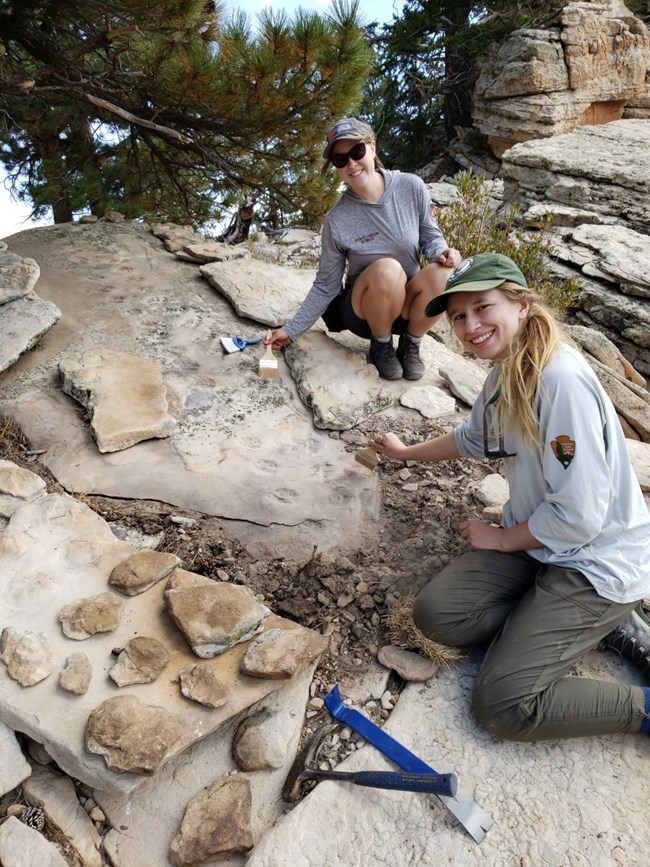
NPS Photo
Erikka Olsen, Paleontologist
What inspired you to study/pursue a career in science?
I’ve always been a curious person and science is a way to better understand the world around me! Studying geology and paleontology allows me to ask and try to answer questions about nature and Earth history.
What do you do at Grand Canyon?
I’m a paleontologist! I study the fossil evidence of ancient life from over millions of years ago. My favorite fossils at Grand Canyon are the 280-million-year-old plant fossils from the Hermit Formation. By studying these, we can learn a lot about the past climate and ecosystems of Earth.
What do you enjoy most about your job?
One of my favorite parts of my job is getting to explore the Grand Canyon and discover new fossils. I spend a lot of time in the field surveying for fossil sites, which can involve hiking, rafting, and even climbing/rappelling into remote parts of the canyon. When we find new fossils, we collaborate with other researchers to study them and learn more about them.
Advice for young women interested in a science-related career?
There’s no one right way to be a scientist- people take different paths to get to where they want to be. In paleontology, for example, my job involves a lot of field work. But other jobs in paleontology are completely laboratory or office based. You can find what works best for you!
More broadly, remember that you are just as capable and worthy of pursuing a career in science as anyone else- have confidence in your abilities!
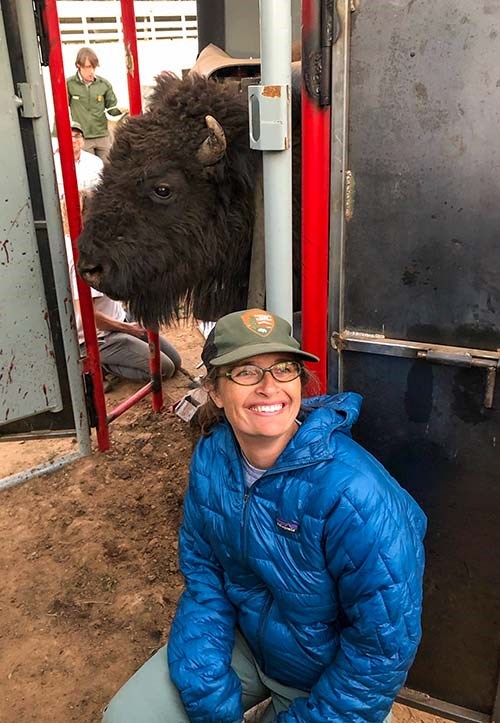
Miranda Terwilliger, Wildlife Biologist
What inspired you to study/pursue a career in science?
Early on I knew I was interested in biology. I was fascinated with how things work. But I knew that I didn't want to be stuck in a laboratory and I didn't know that field biology existed. So, when I went looking for colleges, I went looking for "large organismal biology" and luckily, I had some folks who guided me into a wildlife degree.
What do you do at Grand Canyon?
I am a wildlife biologist. Among other things, I work on monitoring our threatened and endangered bird and invertebrate species and I lead our bison projects on the North Rim. I get to learn about all of the creatures in our park and use that knowledge to help protect them and the places they need to thrive.
What do you enjoy most about your job?
Field work is at the top of the list, but also mentoring young staff. The latter was a totally unexpected joy in my career that I did not anticipate! I also really love facilitating research, in other words, working with researchers on projects to answer questions that help us better manage park resources.
What advice would you give young women who are interested in a science-related career?
Try things, all kind of things that interest you. If you can volunteer for one day, or pick up skills as a hobby do that.Learning what you don't like is as important as learning what you do!
As you start narrowing down your interests, start accumulating a variety of skills you might need to get that job or paid internship. While trying new things, also speak up for yourself. Never let someone put you in a position where you feel unsafe and unsupported. Be willing to be mobile and go to different places to get different experiences. Don't hesitate to ask supervisors and mentors for help and direction.
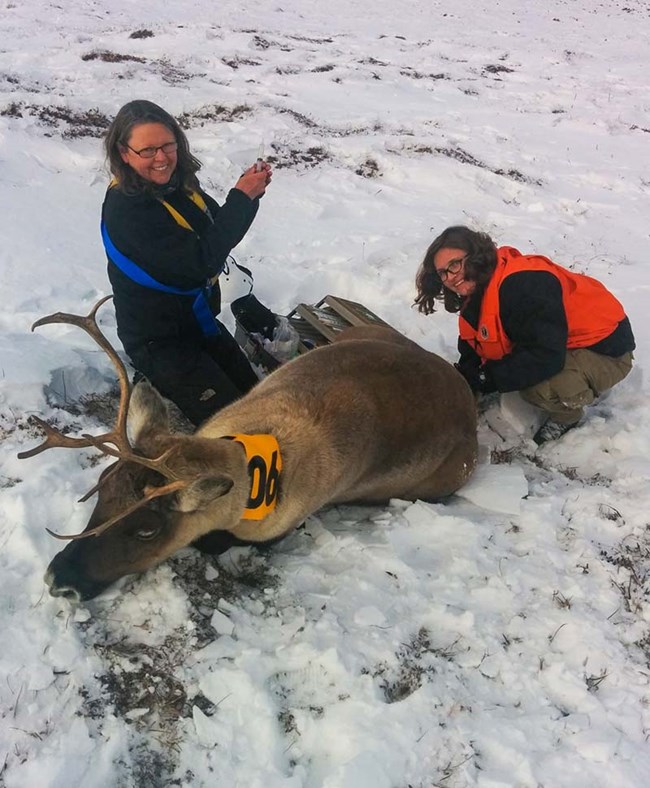
Over the years, I have had many different "ologist" positions; fisheries biologist, botanist, ecologist, marine biologist, wildlife biologist, zoologist, ornithologist, mycologists, etc.—what they have all had in common is learning how organisms vary over space and time and what happens or changes when you add or subtract an element.
This is called spatial ecology and is my driving interest. I started doing field work by volunteering weekends and occasional evenings during undergraduate school, then working summer seasonal jobs and internships
I started doing field work by volunteering weekends and occasional evenings during undergraduate school, then working summer seasonal jobs and internships. I have a master's degree in wildlife which is what introduced me to jobs in our National Parks.
I have been lucky to work across the western United States and Alaska, and outside the country including places like Ghana and Russia. I have worked for many different land management agencies, state game and fish agencies, and even a research aquarium.
I started my permanent career with the NPS at Wrangell-St. Elias National Park and Preserve and have been at Grand Canyon for six years now.
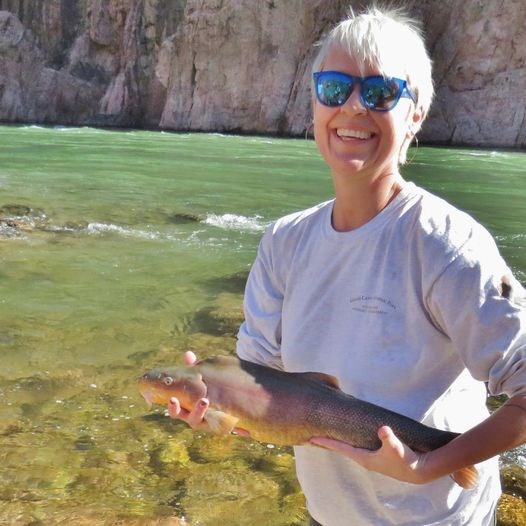
Emily Omana, Fisheries Biologist
What inspired you to study/pursue a career in science?
I have loved aquatic animals since I was very young, especially marine ones. I also spent quite a bit of time as a child playing around in the Colorado River and other southwest rivers. After completing my graduate degree studying marine invertebrates in Mexico, I was lucky enough to find a way to combine my love of the big southwest rivers and Grand Canyon with my love for aquatics.
What do you do at Grand Canyon?
I am a fisheries biologist. I mostly focus on translocations of endangered humpback chub, but also assist with endangered razorback sucker studies and invasive trout removals projects.
What do you enjoy most about your job?
I can't believe that I get to work in one of the wonders of the world, with one of the most interesting assemblages of fishes in the world (but I may be biased).
What advice do you give young women who are interested in a science-related career?
There are so many types of science career paths out there, and it really helps if you find one that you are passionate about.
After graduate school, I spent time helping with commercial and scientific river trips in Grand Canyon. I worked for a consulting company and a non-profit organization before landing in the National Park Service as a fisheries biologist.
Recently I worked for the Bureau of Reclamation as well, assisting with the Glen Canyon Dam Adaptive Management Work Group. Each of these experiences has been valuable to me in so many ways. I am lucky to have worked with incredible mentors in each organization, and highly recommend that you seek mentors out on your own path and don't be afraid to try new things.
